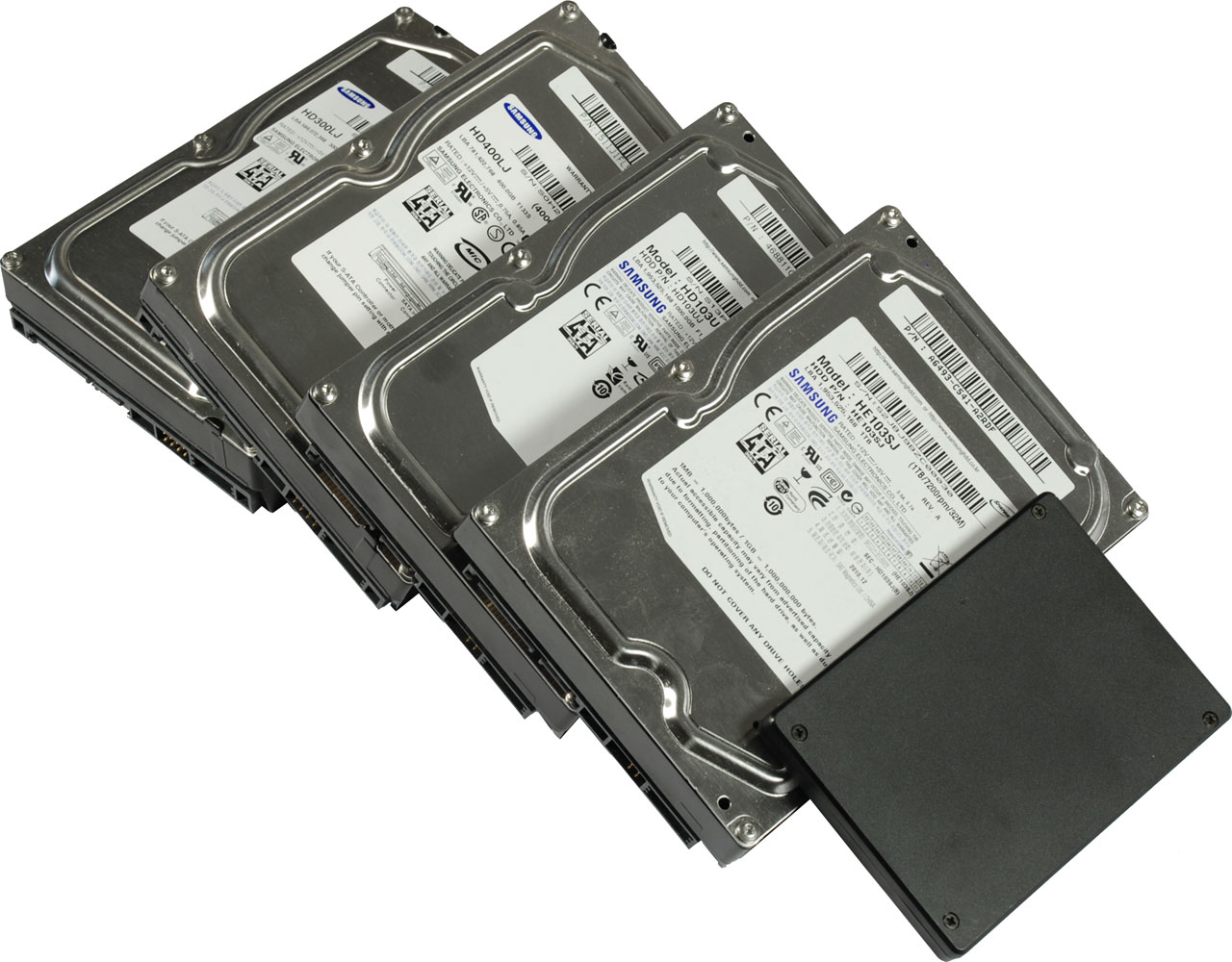Could An SSD Be The Best Upgrade For Your Old PC?
It's a foregone conclusion that SSDs are must-haves in performance-oriented PCs, but our testing reveals that solid-state drives are reasonable upgrades in older mainstream machines, too. We build three old boxes to gauge the impact of an SSD on each.
Upgrading? An SSD Might Make Sense
The solid-state drive industry is currently shifting from the 3 Gb/s to the 6 Gb/s SATA interface, increasing potential throughput from 250+ MB/s to more than 500 MB/s. Enthusiasts currently hamstrung by slow storage performance can definitely appreciate the higher ceiling, particularly in new builds with cutting-edge processors and powerful graphics configurations.
However, we also find ourselves wondering if an SSD makes sense as an upgrade in an older system with components that might not be as fresh any more. It turns out that yes, solid-state technology does have a place alongside previous-generation hardware. It doesn't take a Nehalem- or Sandy Bridge-class configuration to let flash-based media stretch its legs after all.
This article looks at what happens when you replace an existing hard drive with a solid-state drive. We built a few systems that represent PC hardware from 2005, 2006, 2008, and 2010, and then upgraded each of them using an SSD.
Processor, graphics card, and motherboard vendors might not like this revelation, but here it is anyway. If you're not an enthusiast with specific performance requirements, it's not necessary to buy new components every time AMD or Intel launches a platform. If you're just browsing the Internet, using social media, watching video, communicating over Skype, or word processing, a five-year-old Core 2 Duo still probably feels like a snappy-enough system. Granted, gaming, workstation apps, and transcoding workloads are all great reasons to invest in modern components. But entry-level, mainstream Windows-based boxes simply don't need any more muscle than that.
Once you do feel an urge to upgrade, the question becomes: where to start? Should you drop in a new processor? Many folks like to think that simply adding more RAM is the cure-all; will dropping in additional modules help? Would a new graphics card address the situations where you notice slow-down? Or how about a larger hard drive because you're simply running out of space? There are plenty of ways to spend money trying to beef up the speed or capacity of an older machine.
But almost nobody considers adding an SSD. After all, an SSD is hardly effective for addressing capacity issues. And SSDs generally fall below all of those other parts when power users think about the pieces that'd help improve performance.
Before you even try dropping an SSD into an old box, though, consider a couple of caveats first. We're neither concerned with the model of drive you use, nor the price at which you buy it. Practically, even value-oriented SSDs are considered relevant when it comes to upgrading aging hardware. However, we do want to mention that it is important to use a SATA controller with AHCI support because it's necessary to support the TRIM command. Every SSD can be operated without TRIM, but at the risk of decreased performance after intensive use. As more general guidance, there is a minimum amount of processing power and memory you'll want before an SSD makes sense. Own a decent dual-core CPU and at least a couple gigs of memory. Otherwise, you're probably on a trajectory for a full system revamp, and not just a single-component upgrade.
Get Tom's Hardware's best news and in-depth reviews, straight to your inbox.
Current page: Upgrading? An SSD Might Make Sense
Next Page System Configurations: PCs From 2005 To 2010
Patrick Schmid was the editor-in-chief for Tom's Hardware from 2005 to 2006. He wrote numerous articles on a wide range of hardware topics, including storage, CPUs, and system builds.
-
MAGPC SSD is just too exaggerated, yes it is faster than HDD and may be more reliable but that doesn't justify its price.Reply
Waiting until it is price gets reasonable. -
mayankleoboy1 ReplyThe conclusions we're drawing relate to the mainstream folks trying to get more life from an already-aging box
since its for mainstream, i would have liked a subjective test where some 'average' folks, doing 'average' tasks, would use the machines with/without SSD's, and rate the perceived speed on a scale of 1=10.
those should have been included as well. most people "feel" the speed, rather than benchmark it. -
Please do a test with a Pentium 3 + KingSpec PATA SSD.Reply
I'm very curious about the results. My Dell Lat C400 is chugging along just fine on Windows 7 but I believe a SSD would greatly improve performance. -
I recently bought a Transcend 32GB SSD to be my Boot Drive in my 5+yr old system- Athlon64 3200+ (Venice) S939 , Gigabyte GA-K8N51PVMT-9 ( Geforce 6150), 2 Gb DDR400, WIN7 SP1.Reply
I do not see that the SATA controller mentions AHCI in the device manager tab, however when I run the TRIM check commnand through CMD, it returns a "enabled" reply. Also,have made the necessary registry changes to ensure that AHCI is enabled. There is however no option in the MB bios to set AHCI.
So is my drive configured with TRIM enabled or not? -
buxx I wish I knew the answer to your question too. I have a Dell Dimension XPS600 which I would love to put an SSD into, just as this article suggests. However I can't find any mention of AHCI in the BIOS, manuals or anywhere on the web. Hard to say if it's present, but you would guess not, if they don't mention it... right?Reply
-
compton I think that if you're trying to get more legs out of an older system, a SSD is definitely a great way to do that. Especially with laptops from the past four years -- a Core 2 Duo processor in a laptop still isn't fast, but a decent SSD will make it feel like a new system (at least in my experience) and then some. I think trying to make your Pentium 4 system better with some solid state storage is a lost cause however.Reply
MAGPCSSD is just too exaggerated, yes it is faster than HDD and may be more reliable but that doesn't justify its price.Waiting until it is price gets reasonable.
How much is reasonable? A 64GB Crucial M4 is $105... that's pretty damn reasonable to me. For that kind of money you could get a low-end mobo, an Athlon X4, or 16GB of DDR3. Upgrades don't get much more reasonable than that. But if you already have a decent, if older system, installing an SSD will make it feel like a brand new system should for the least amount of money. -
jsrudd I installed an SSD in my netbook with an 1.6ghz atom processor and it really sped things up. The computer went from unusable to fine for casual usage.Reply -
SpadeM Predictable outcome but informative article non the less. My only concern is that since you talked about mainstream pc, i didn't see any amd equipped system. This is not about AMD vs. Intel it's about storage controller performance. Thinking back, most builds I did back in the 2004 - 2006 time frame where based off nvidia + amd. This article would have painted a more complete picture if it had taken into consideration the other half of the pc landscape. In theory i guess you can argue that yes, if it is AHCI enabled then it "should" be the same outcome as the ICH scenario ... but is it for a fact?Reply -
echdskech Maybe Tom's can do double blind subjective tests like they do in Mythbusters.Reply
Spend 10 mins doing office/internet stuff on each config without knowing which is which and rank them by speed subjectively.
